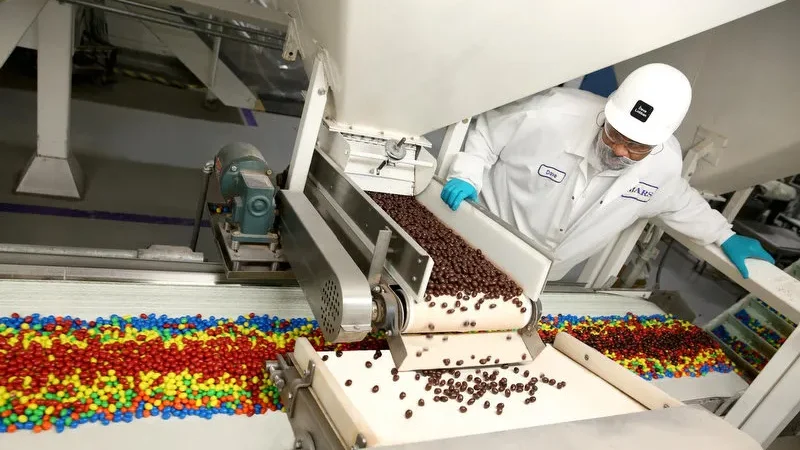Background
Mars Wrigley started using the VelocityEHS electronic Permit-to-Work software at their Elizabethtown site in 2017, which expanded to incorporate Mars Chicago, Mars Waco, Mars Elizabethtown, and Mars Hackettstown.
The fundamental motivation behind investing in the VelocityEHS system was to streamline the permitting processes, improve planning of incoming works on-site and enhance awareness of the works being performed on-site, as well as to address issues such as transparency and efficiency.
The sites previously utilized a paper-based system for permitting and an electronic system for managing contractors. This system was extremely cumbersome and time inefficient. However, the utilization of a contractor management system guided the company on how a digital system could also improve the permitting processes by making them more efficient and quicker.
The Problem
The four Mars Wrigley sites had significant difficulties relating to their previous paper-based system. These problems were not only time-consuming and steeped in human error but also lacked ease of maintainability and accountability from individual permit owners and job executors.
Compliance around audit time was a significant issue for Mars. Over half of their sampling audits had some sort of problem, whether that be missing information and incomplete permits, mistakes through human error, or delays with retrieval of information.
The main grievances of Mars’ system before VelocityEHS was having to chase down what work was currently taking place. This lack of awareness was quite problematic as it involved acquiring relevant information from other engineers or going through previously made notes.
Thus, it resulted in an incredibly inefficient, cumbersome process undermining visibility and transparency on-site. Additionally, the quality and the ability of permits was limited, and the capability of tracking work on-site was minimal at best. Very often, there was insufficient thought put in the projects for the work activities.
Mars is always searching for creative ways of utilizing their digital resources and aiming at achieving global standards for work construction standardized across the network. The volume and the intricacy of various ongoing projects on-site, the need for more transparency, improved quality, risk compliance and enhanced efficiency ultimately motivated the company to drive into a more innovative and efficient solution.
The Solution
An EHS manager of Mars Elizabethtown, being previously familiar with VelocityEHS, acknowledged the advantages and benefits of the Control of Work software and realized his site required something similar. As a result, he saw VelocityEHS software as an solution that would add and release value across his Elizabethtown site and to the rest of the sites after positive implementation.
VelocityEHS Control of Work software was implemented with a dedicated electronic Permit-to-Work for Mars. The VelocityEHS project team worked attentively with EHS managers to ensure the Permit-to-Work system meets Mars sites’ exact needs and requirements. Each one of Mars sites permits were reconstructed electronically along with a centralized database of contracting companies, contractors and their qualifications and insurance information to ensure the utmost compliance.
Mars users can now access the permit calendar where they can view all the activity of permit-required work at a site-wide level. They can administer and assess information regarding contractor compliance; generate a variety of reports on all work and visitor activities on-site; emphasize the required safety equipment or PPE across numerous permits and access a site map to view the exact locations of where the permit-required activities are taking place.
As a result, Mars has greater visibility over when and what works are taking place across each site, information regarding what contractors are currently on-site whilst also ensuring incidents are being recorded more precisely due to increased accountability.
Through the utilization of Permit-to-Work, particularly with the permit template feature, the sites can now ensure that every job is properly permitted. Furthermore, the process of permitting jobs, the speed and the self-service capability have increased significantly.
The Results
Through regular use of Permit-to-Work software, compliance in Mars Hackettstown has increased from 50% upwards to 90%.
Moreover, the site is currently saving at least 20-man hours a day in comparison to their previous paper-based system. The speed of creating permits has positively impacted efficiency and now enables better incident tracking and recording. The digital transformation saves a third of Mars Chicago EHS manager’s time, while preventing errors and making the whole permit creation process simpler and quicker to manage.
Mars Elizabethtown recognized a cost avoidance of tens of thousands of dollars in terms of labor and $10,000 on paper expenditures after introducing electronic documents to permitting processes on site. Moreover, the permit tags feature implemented by Mars Elizabethtown has also proven to be immensely beneficial in terms of improving auditing processes.
The EHS professionals can now monitor all the permit-required work that is taking place at any one time on an integrated calendar, ensuring there are no conflicts that would compromise safety and assess risk in advance based on actual scheduled activity. Likewise, visibility and the speed of obtaining information has substantially improved throughout the three sites, and there is no more confusion and concern regarding which contractor is involved with work on-site.
The system has also considerably simplified the whole process involved in raising a permit. It eliminated the need for verifying 30+ permits a day while ensuring that mandatory information is filled out, whether the companies coming on-site are approved or not and whether the qualifications of contractors are adequate. The level of thoroughness has undoubtedly increased.
Return to Mars
